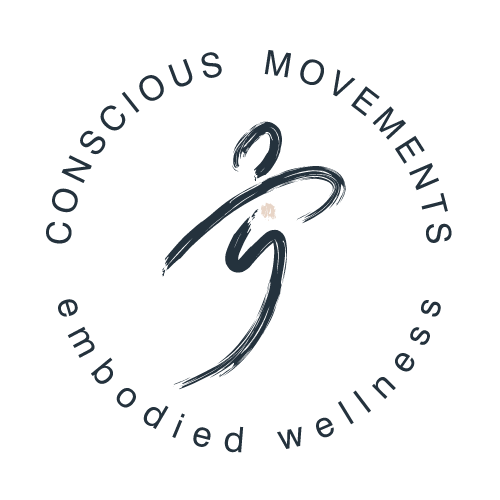More Movement. Less Exercise
Your health & your life depend on movement.
—Buffy Owens
There is no life without movement. From the blood that pulses through our veins to the actions required to gather and consume food, your mind and body are intimately connected. And while your brain is the master control system for your body’s movement, the way you move can also affect how you think and feel.
Some of the functions for movement are obvious — like hunting and gathering. Other critical aspects of movement may be less obvious — like the way movement acts as an extension of your cardiovascular system or primary pump for your lymphatic system. And then, there are all the other ways movement impacts you emotionally, mentally, and socially.
There’s a lot I could say about movement. But for today, we'll focus on the importance of moving more in everyday life (i.e. more movement, less exercise).
The human body, with approximately 640 muscles and 206 bones, is made to move. But in general, we humans seem to be moving less and less.
You've probably heard that sitting is the new smoking. There’s been some decent research that indicates that time spent sitting down directly correlates with longevity, insulin sensitivity, heart health, and more. Those who spend more time sitting down versus being up and about are more likely to experience health problems and possibly an earlier death. This is independent of exercise habits. Those who sit the most have the most health issues, even if they exercise regularly.
Did You Know...
In less than two generations, physical activity has dropped 32% and research suggests adults spend about 60% or more than 8 hours of their waking day being sedentary! What we do in our leisure time doesn’t come close to making up for what we’ve lost.
How big of a risk increase are we talking?
Just for giggles, let's talk numbers. Some studies estimate that every extra hour you spend sitting in front of the TV each day is associated with an 18% increase in heart disease death and an 11% increase in death from all causes. Another study framed it this way: every hour of TV you watch after the age of 25 reduces your life expectancy—at least statistically—by almost 22 minutes.
Feeling the fear & guilt yet?
If so, don't worry, we're not going to dwell on the negative for too long.
Ok. Ok. So we now know that sitting constantly is creating disease. But here's the deal-y-oh, standing constantly also creates disease. The problem is not sitting per se, it’s prolonged stillness and a lack of variation in your daily routine. The problem is being sedentary.
How do we define being sedentary versus being active?
The phrase “sedentary behavior” comes from the Latin word “sedere,” which means, “to sit.” More specifically, the International Journal of Behavioral Nutrition and Physical Activity defines sedentary behavior as:
"Sedentary behavior is any waking behavior characterized by an energy expenditure ≤1.5 metabolic equivalents (METs), while in a sitting, reclining or lying posture. In general this means that any time a person is sitting or lying down, they are engaging in sedentary behavior. Common sedentary behaviors include TV viewing, video game playing, computer use (collective termed “screen time”), driving automobiles, and reading."
Now that we have a working definition of sedentary behavior, let's take a look at some ways to integrate more movement into your life today!
How often should we move?
A growing body of scientific literature shows that moving around for just two minutes every 20 minutes has tremendous health benefits. But you've got to be moving around! One paper published showed that simply standing for two minutes didn’t do much good. But getting up and moving around, specifically a slow walk, was key to reaping the benefits.
One of the easiest ways to get more moving in your day is to set a timer during those times when you're sedentary — working at a computer, knitting, writing, reading, watching T.V., etc. By repeatedly setting a 20-minute timer and then getting up and walking around for two minutes throughout the sedentary portion of your day can completely negate the health detriment of prolonged sitting.
Can't-do every 20 minutes? Then shoot for moving for 5 minutes every 40 minutes. This can sometimes be an easier rhythm to start with and then you can always transition to the 20-2 option.
Here are a few things to do during those two minutes:
Walk for at least 20 feet and then make sure you walk to a window. Look out on the horizon. It'll feel nice and your eyes will thank you. Then walk yourself to get a glass of water for a bit of hydration goodness.
Do some air squats or play with standing up and sitting back down in a chair several times before you stroll around.
Put on your favorite song and shake your derriere like you just don't care. A good ol' fashioned dance party is a wonderful way to move & groove.
If you've got the space and you're proficient at rolling, then roll around on the floor for a few then walk it out for two.
Stretch your arms high above your head or hang from a bar for a bit... but then keep on strollin'.
The above list is just a glimpse of some of the ways to move throughout your day. If you want more inspiration, make sure to download the Activity Intensity List. It's plum full of movement inspiration.
To wrap it up, I want to emphasize that the goal is to incorporate consistent and gentle movement throughout the day and some form of more moderately-intense activity at least a few times a week. I’m absolutely NOT saying that lifting weights, getting some heart-thumping cardio, or a challenging hike isn’t good for you! Of course, they are. There are tons of benefits to including more rigorous exercise in your life.
I like to think of it as expanding one's movement repertoire — from the power of gentle movement to the human need to diversify and intensify movement for optimal health.
+References & Supportive Studies
Beddhu S, Wei G, et.al. Light-intensity physical activities and mortality in the United States general population and CKD subpopulation. Clin J Am Soc Nephrol. 2015 Jul 7;10(7):1145-53. doi: 10.2215/CJN.08410814. Epub 2015 Apr 30.
Bailey DP and Locke CD. “Breaking up prolonged sitting with light-intensity walking improves postprandial glycemia, but breaking up sitting with standing does not.” J Sci Med Sport. 2015 May;18(3):294-8. doi: 10.1016/j.jsams.2014.03.008. Epub 2014 Mar 20.
Biswas, et al. “Sedentary Time and Its Association With Risk for Disease Incidence, Mortality, and Hospitalization in Adults: A Systematic Review and Meta-analysis.” Ann Intern Med. 2015;162(2):123-132.
Dunstan DW, et al. “Television Viewing Time and Mortality: The Australian Diabetes, Obesity and Lifestyle Study (AusDiab).” Circulation. 2010; 121: 384-391.
Dunstan DW, et al. “Breaking Up Prolonged Sitting Reduces Postprandial Glucose and Insulin Responses” Diabetes Care. 2012 May; 35(5): 976–983.
Healy GN, et al. “Breaks in sedentary time: beneficial associations with metabolic risk.” Diabetes Care. 2008 Apr;31(4):661-6. doi: 10.2337/dc07-2046. Epub 2008 Feb 5.
Kerjaschki D. “The lymphatic vasculature revisited.” J Clin Invest. 2014 Mar 3; 124(3): 874–877.
Hamilton MT, et a. “Exercise physiology versus inactivity physiology: an essential concept for understanding lipoprotein lipase regulation.” Exerc Sport Sci Rev. 2004 Oct;32(4):161-6.
Kim KZ, et al. “The beneficial effect of leisure-time physical activity on bone mineral density in pre- and postmenopausal women.” Calcif Tissue Int. 2012 Sep;91(3):178-85. doi: 10.1007/s00223-012-9624-3. Epub 2012 Jul 6.
Koster A, et al. “Association of sedentary time with mortality independent of moderate to vigorous physical activity.”PLoS One. 2012;7(6):e37696. doi: 10.1371/journal.pone.0037696. Epub 2012 Jun 13.
Langsetmo L, et al. “Physical activity, body mass index and bone mineral density—associations in a prospective population-based cohort of women and men: The Canadian Multicentre Osteoporosis Study (CaMos).” Bone. 2012 Jan;50(1):401-8. doi: 10.1016/j.bone.2011.11.009. Epub 2011 Nov 30.
Larsen RN, et al. “Breaking up prolonged sitting reduces resting blood pressure in overweight/obese adults.” Nutr Metab Cardiovasc Dis. 2014 Sep;24(9):976-82. doi: 10.1016/j.numecd.2014.04.011. Epub 2014 May 2.
Miyachi M, et al. “Installation of a stationary high desk in the workplace: effect of a 6-week intervention on physical activity.” BMC Public Health. 2015 Apr 12;15:368. doi: 10.1186/s12889-015-1724-3.
O’Keefe, et al. “Organic fitness: physical activity consistent with our hunter-gatherer heritage.” Phys Sportsmed. 2010 Dec;38(4):11-8. doi: 10.3810/psm.2010.12.1820.
Oppezzo and Schwartz. “Give your ideas some legs: the positive effect of walking on creative thinking.” J Exp Psychol Learn Mem Cogn. 2014 Jul;40(4):1142-52.
Owen, et al. “Too Much Sitting: The Population-Health Science of Sedentary Behavior.” Exerc Sport Sci Rev. 2010 Jul; 38(3): 105–113.
Panter-Brick. “Sexual division of labor: energetic and evolutionary scenarios.” Am J Hum Biol. 2002 Sep-Oct;14(5):627-40.
Pontzer, et al. “Hunter-Gatherer Energetics and Human Obesity.” PLoS One. 2012; 7(7): e40503.
Pontzer, et al. “Energy expenditure and activity among Hadza hunter-gatherers.” Am J Hum Biol. 2015 Mar 30. doi: 10.1002/ajhb.22711.
Veerman, et al. “Television viewing time and reduced life expectancy: a life table analysis.” Br J Sports Med doi:10.1136/bjsm.2011.085662
Zawieja D. “Contractile Physiology of Lymphatics.” Lymphat Res Biol. 2009 Jun; 7(2): 87–96.
















